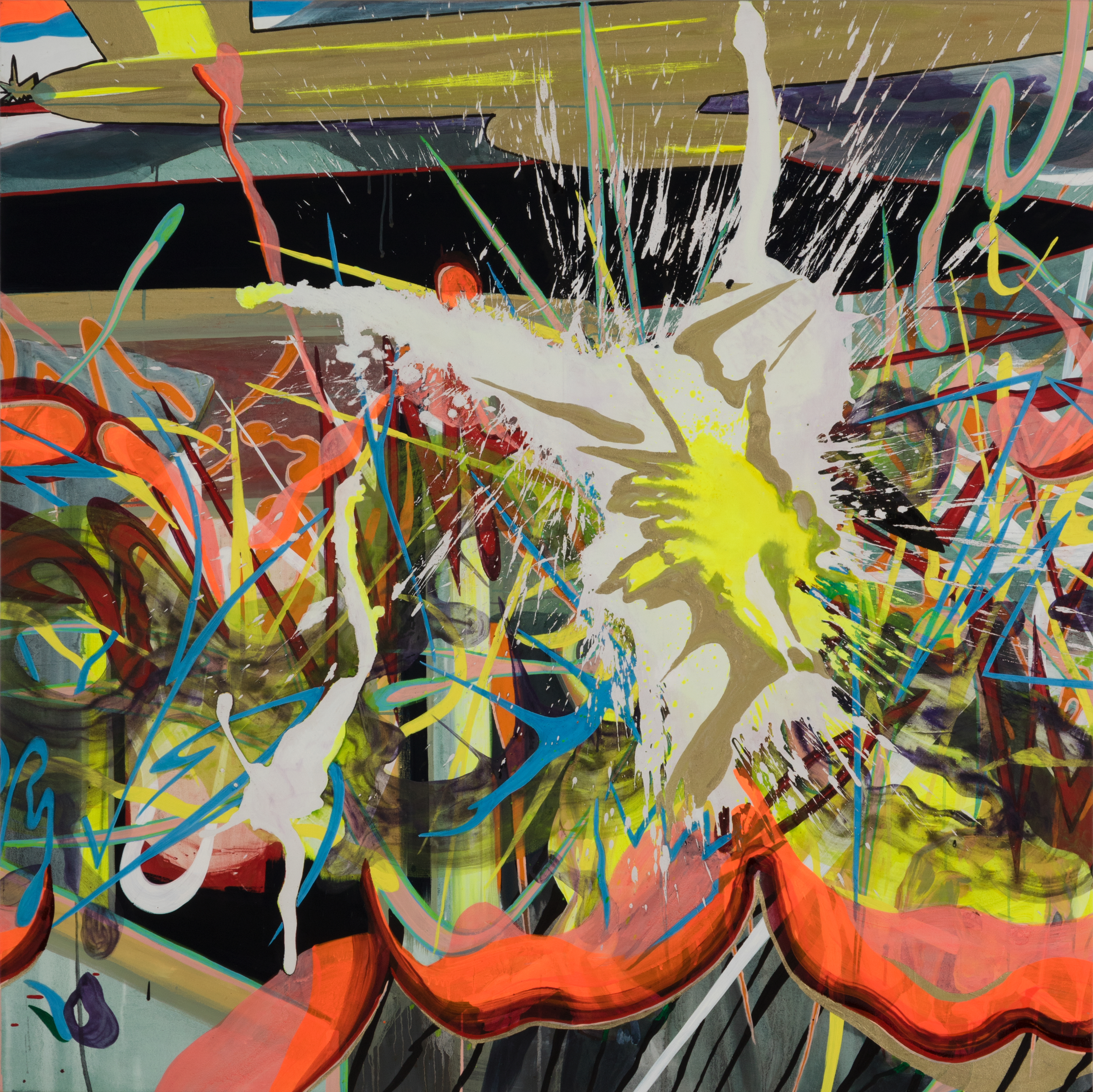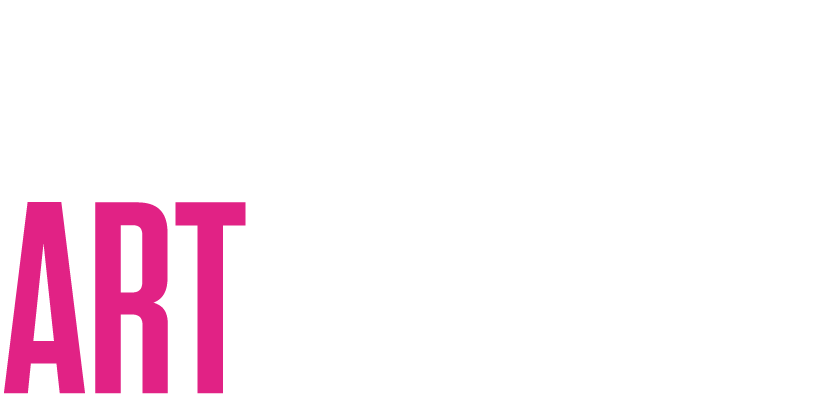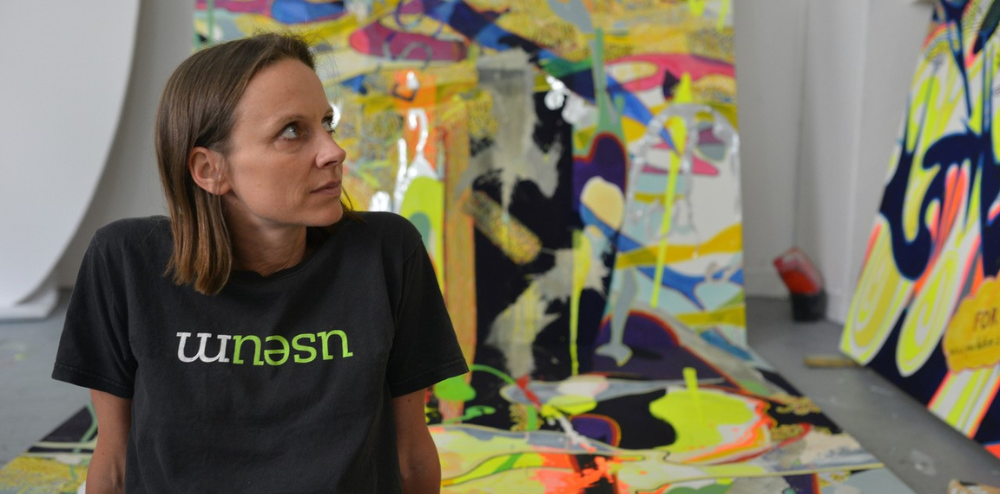Painting the Invisible: Claudia Chaseling Interviewed
Berlin-based Australian artist Claudia Chaseling creates dynamic ‘spatial paintings’ that fuse abstraction, activism, and deep research. Following the occasion of her inclusion in the collection exhibition, Radiant, she reflects on painting’s power to reveal unseen truths and her ongoing commitment to complexity, perspective, and political engagement.
Where are you right now?
I’m in Berlin. I’m often travelling with my work. I don’t love travelling, but as an artist it helps to be open to working in different places.
When did you decide you wanted to be an artist?
One of my earliest memories is trying to draw a horse—but it looked more like a dog. I realised I had to learn to observe. Drawing felt like a way to capture life as it happened. In Munich, I met a mentor, Hans-Dieter Sonntag, when I was 17. He told me I could go to art school and study free visual arts. That changed everything. We’d talk for hours about philosophy, politics, and painting. He sent me to study with Herman Nitsch, who became another key teacher. By 19, I was studying art and fully committed.
Where do you think painting sits right now?
Painting is a specific and enduring medium with a rich history. It can express anything—emotion, intellect, politics. Good painting has an aura, a presence. I’m drawn to working with space in painting, breaking out of traditional boundaries. Colour, especially when using dry pigments, creates a unique language. Inventing your own methods takes time. There’s mystery in it.
How does the paintbrush apply to activism?
What you depict matters. Painting can be a form of activism—almost like a billboard. It can carry emotional and political weight. You can embed text, imagery, emotion. It’s a powerful form.
Your Spatial Paintings are immersive and activist in nature. How would you summarise your practice?
Each painting begins with a specific idea. I’ve always been interested in painting what can’t be seen—the sense of a place or idea, not its literal image. Early on, I wanted to show multiple perspectives on one canvas, reflecting how truth is flexible and dependent on context. This led me to paint in three dimensions, creating installations that distort or activate space. I call it the "mutative perspective."
Since 2005, my work has become more political. After seeing a documentary on depleted uranium munitions, I began incorporating that research into my abstract practice. Over years, I learned how to convey that information visually. The Spatial Paintings reflect this—text, distortion, colour, and research are all embedded. Viewers can emotionally and intellectually engage with the work, and follow the trail of the research.
How has your practice evolved over time? What has remained constant?
My interest in space and the invisible has been a constant. When I arrived in Australia in 1999, I started developing a painting vocabulary based on the landscape, especially water structures. Over time, I incorporated architectural and technological elements. But my drive to express unseen structures and perspectives hasn’t changed.
How do ideas of structure and chaos influence your work?
Each painting starts with an idea and evolves through sketches and research. As I paint, a certain logic or order emerges. But then I break it—disrupt it—so there’s a constant dialogue between structure and chaos. This reflects life itself. You need irregularity to see regularity. You need chaos to understand structure.
How do those concepts play out in society and your work now?
The world is more complex than ever. I stick with one topic for a long time, rather than chasing what’s new. Through deep research, I build layered, nuanced understandings. One topic can lead to many others. For instance, I’ve worked on the use of agricultural chemicals—poisons in landscapes—which led me into global politics and corporate control. Four companies control 70% of the pesticide market. Many pesticides banned in the Global North are exported to the Global South. These are interconnected issues, not black and white. That complexity shapes my painting.
Does your practice give you a sense of control, or do you embrace uncertainty?
Life can’t be controlled, only nudged. I work slowly and allow for uncertainty. My goal in each work is to bring intellect and emotion together. A painting must work on both levels—it can’t just deliver information like a newspaper. Painting slows things down, which is healthy. It offers a kind of sanity in a fast world.
Can you comment on your time at Wollongong Art Gallery, and your inclusion in the Radiant exhibition?
My time at Wollongong Art Gallery was wonderful. The team was professional and supportive. I spent ten days installing the work and was grateful for the beautiful publication and opening speech by Lara Nicholls. It felt like a dream project. I’m proud that the work is now featured in Radiant: Contemporary Paintings from the Collection.
Where to from here—and what guides you?
My work and my husband guide me. We’re both freelance visual artists and try to travel together. Right now, I’m working on a public art proposal for a school. It’s complex—visualising a painting across four walls based on hand-drawn ideas. I’m very analogue, so translating that into digital plans is a challenge.
I’m also experimenting with making Spatial Paintings on shaped canvases and new materials, rather than painting directly on walls. I want the works to be preserved—not just painted over after an exhibition. That’s a big part of where I’m going: figuring out how to make the work portable, while keeping the integrity of the installation.
And I’m continuing to work on large, contemporary landscape paintings. Art is always a challenge—in every direction.
Wollongong Art Gallery
November 2024

Image: Claudia Chaseling, dog, 2015, egg tempera and oil on canvas, 150 x 150 cm. Purchased 2018.
Image: Claudia Chaseling, artist’s studio Berlin.

